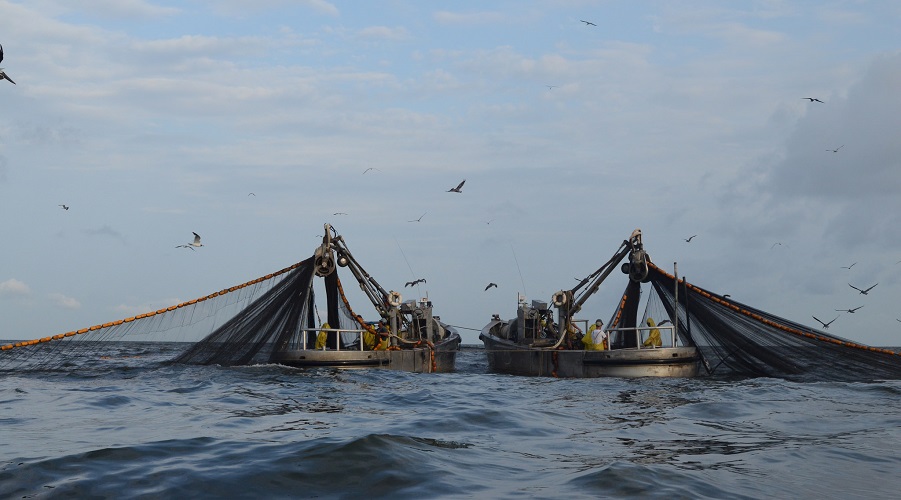
Menhaden fisheries in Louisiana, USA. Photo by Louisiana Sea Grant College Program Louisiana State University, Flickr, CC BY 2.0.
Fishing companies operating worldwide are missing between $51 billion and $83 billion in unrealized net economic benefits every year due to the overexploitation and underperformance of fish stocks. For these fishing companies, that means they are spending too much and getting fewer fish, revenues and profits than they could.
New research by experts with the Sea Around Us initiative, the Institute for the Oceans and Fisheries at the University of British Columbia, the Fish Tracker initiative and the Sea Around Us – Indian Ocean, shows how fishing companies operating both in North and South America could have increased their profits substantially in past years had they allowed fish stocks to rebuild and fish them sustainably.
The researchers looked at companies targeting menhaden in the USA and anchoveta in Peru and developed a seven-step method to link their revenues and profits to the fish resources they exploit while considering their status in terms of abundance.
“We found that Atlantic and Gulf menhaden stocks were in a healthy state and were being exploited below sustainable levels. By not augmenting their catches the two largest companies targeting them were losing $50 million in additional revenues and $12 million in profits,” said Tim Cashion, lead author of the study and Ph.D. candidate in the Institute for the Oceans and Fisheries.
South of the Equator, the picture is a very different one but the economic losses persist. “The seven largest fishing companies targeting anchoveta in Peru could have significantly increased their individual annual revenues by $3 million to $9.1 million between 2011 and 2015 if management institutions had promoted the recovery of the stocks by applying more conservative fishing policies,” co-author Santiago de la Puente, who is also a Ph.D. candidate in the Institute for the Oceans and Fisheries, explained.
In both cases, however, changing fishing strategies has an unavoidable initial cost. For the Peruvian anchoveta stocks, reducing the level of catches would have implied a few years of diminished revenues until the stock recovered. For the USA menhaden, increased catches would probably have increased fishing costs and affected profitability. Yet, the overcoming of the initial stages of change would have created a new situation in which the present gains would have overpassed the losses.
“Companies that do not optimize their fishing practices are making their owners, shareholders and investors lose money. They are also affecting governments, who lose tax dollars and licensing fees. This study shows that, besides the obvious ecological benefits, there are massive economic rewards in rebuilding fisheries stocks and keeping them in a healthy state,” co-author Daniel Pauly, Principal Investigator of the Sea Around Us initiative, concluded.
The paper “Establishing company level fishing revenue and profit losses from fisheries: A bottom-up approach” was published in PLOS ONE https://journals.plos.org/plosone/article?id=10.1371/journal.pone.0207768


